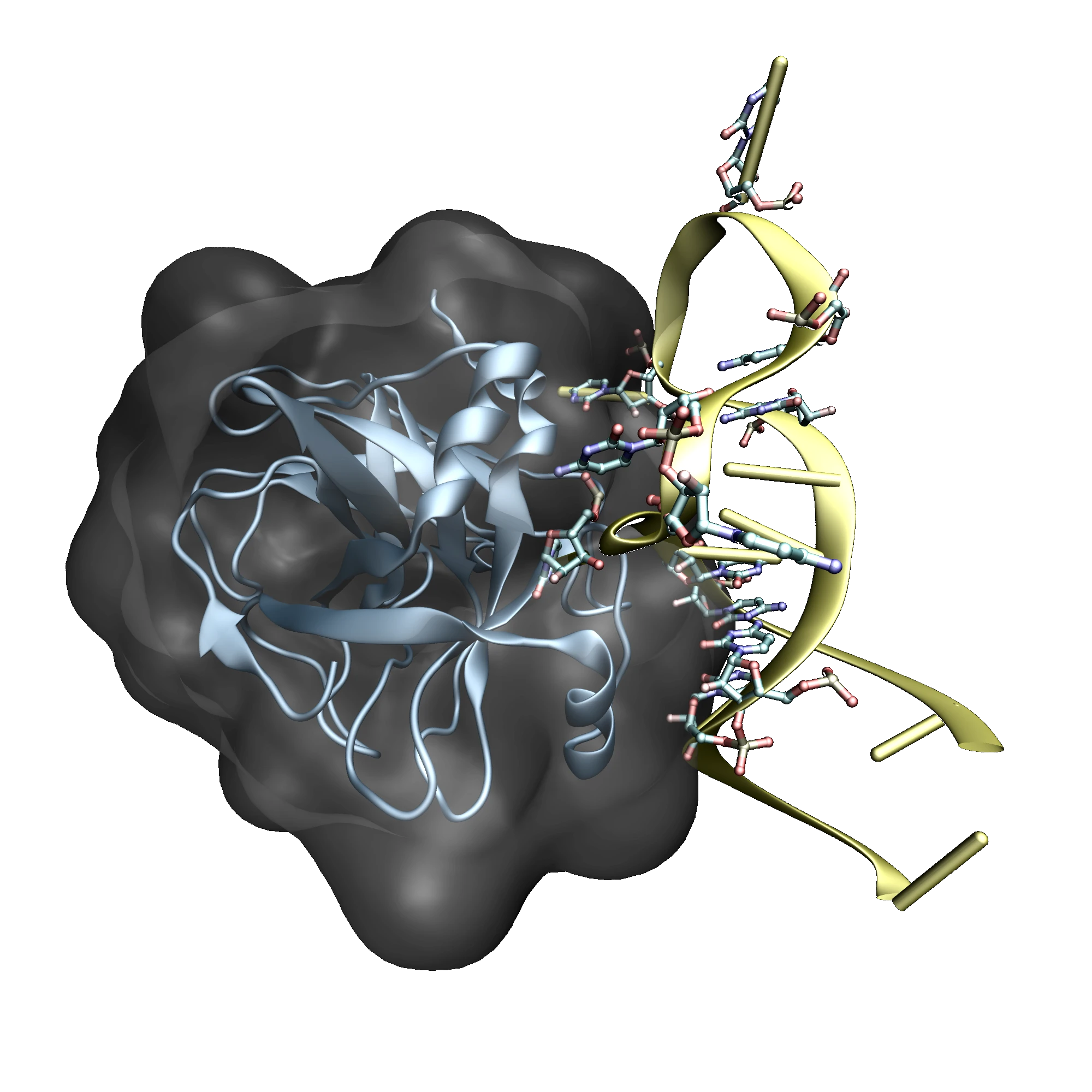Protein / Biologics Design
Engineer Proteins with Precision and Confidence
From structural blueprints to mutational landscapes, our in-silico workflows deliver high-fidelity models, optimized stability, and quantified binding energetics before you go to the bench.

Identify therapeutic or engineering goals
Clearly defined design objectives, such as enhancing stability, optimizing binding affinity, or creating novel protein structures, are established. This includes precisely locating specific protein or biologic targets and their desired functions.
Create novel structures with design tools
Initial protein sequences and structures are generated using de novo design tools like Rosetta, AlphaFold, RFdiffusion, and ProteinMPNN to explore novel folds and engineered interfaces. This step allows for the creation of new biological entities.
Protein dynamics and interaction strength
Molecular dynamics simulations are applied to capture dynamic movements and conformational changes of proteins, while docking techniques model protein-ligand or protein-protein interactions. Binding energetics are evaluated using free energy calculations.
Predict structural integrity & functional impact
Protein stability is assessed, and mutational scans are performed to predict how sequence changes affect structural integrity and function. This aids in rational protein engineering.
Iterative improvements for enhanced performance
Protein designs are refined based on computational predictions of stability, binding affinity, and functional characteristics. This iterative process guides rational engineering and mitigates experimental risk.
Compare pricing
Compare our plans
Depending on system size, compute usage & level of support.
Project Scope | 1–2 systems, low–medium complexity | Multiple systems, high complexity | Long-term support, flexible tasks |
Methods | Basic/diverse docking; short–mid MD; µs-level MD; preliminary ML | Extended MD; FEP/TI; DFT; custom ML/workflows | Priority resources; advisory analysis; ad-hoc studies |
Deliverables | Full report + reproducible workflow (includes quick results + summary) | Complete technical dossier + reusable pipeline | Continuous deliverables with monthly milestones |
Use Cases | Feasibility, lead triage, publication-ready prep | Lead optimization, regulatory/Review-ready submissions | Ongoing R&D and parallel projects |
Customizable Report | Fixed Templates |
FAQ
Expert Insights. Scaled to Your Needs
How does the consulting process work?
Our process follows six steps: Scope Determination → Solution Proposal → Pilot Study → Result Presentation → Evaluation → Finalization & Execution. This ensures transparency and alignment at each stage.
What engagement models do you offer?
We offer fixed-price, milestone-based, time-and-materials, and retainer models, depending on project needs and level of support required.
How long does a typical project take?
Timelines depend on complexity, but small pilot studies can be completed in 2–4 weeks, while full-scale projects usually take 2–3 months or more.
Who owns the results and intellectual property?
Clients retain full ownership of results and foreground intellectual property. We work under NDA and provide clear IP agreements.
What types of systems do you work on?
We work across nucleic acids (natural and chemically modified), proteins, small molecules, polymers, and aqueous or complex chemical systems. Our workflows are adaptable to diverse research questions in biology, chemistry, and materials science.
Can you integrate experimental data into the modeling workflow?
Absolutely. Experimental observations such as binding assays, thermodynamic measurements, or structural data can be used to calibrate, benchmark, and validate our computational results.
How reliable are the predictions?
Our results are supported by validation against reference data, convergence diagnostics, and explicit reporting of uncertainties. We emphasize reproducibility and clearly state limitations alongside predictions.
Can you customize workflows for specific problems?
Yes. Every project is tailored to the client’s system, objectives, and available data. We design flexible workflows that balance accuracy, scalability, and cost.
What deliverables will I receive at the end of a project?
Deliverables typically include a detailed report with figures and tables, curated datasets, and reproducible workflows or scripts. All results are prepared to be publication- or presentation-ready.
Do you work with both academic and industry groups?
Yes. We collaborate with academic labs, biotech startups, and established companies worldwide.
Can you support grant or funding applications?
Yes. We provide preliminary computational results, methods descriptions, and figures that can strengthen the technical case of grant or funding proposals.
Can you scale computations using cloud resources if needed?
Yes. We routinely deploy workflows on cloud platforms for large-scale simulations, ensuring cost-efficiency, scalability, and secure data management.
Connect. Collaborate. Grow.
Be part of a growing community of molecular modeling and simulation. Share insights, discuss strategies, and stay updated with the latest trends.
